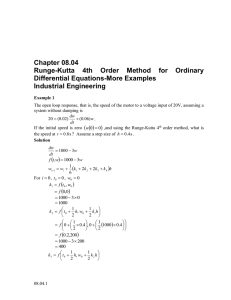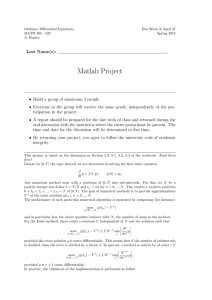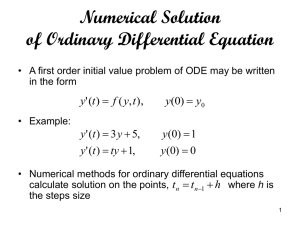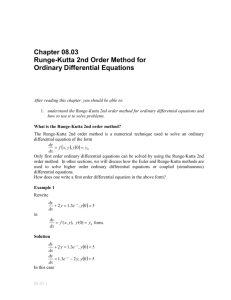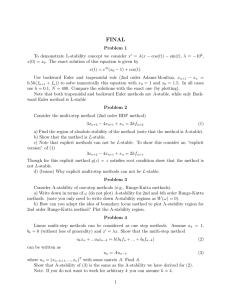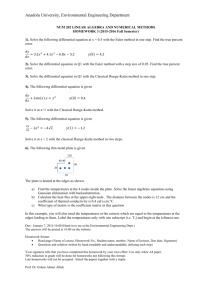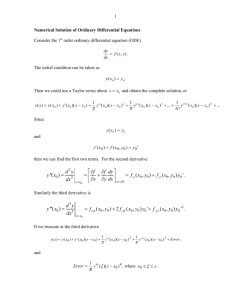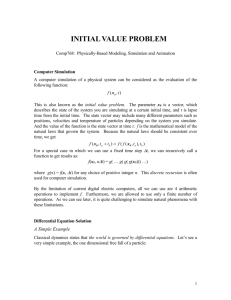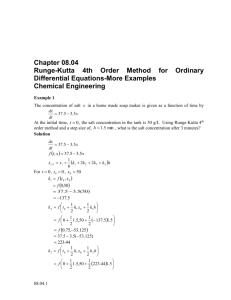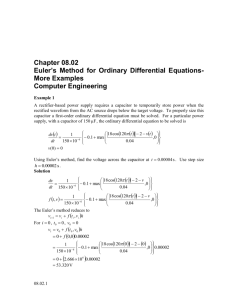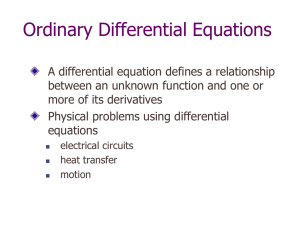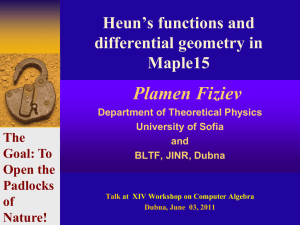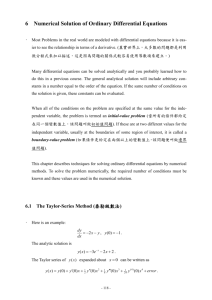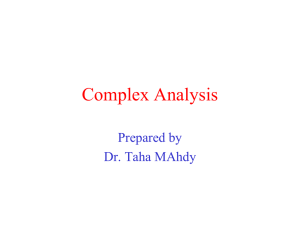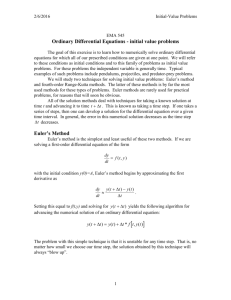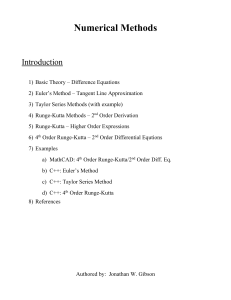Euler`s Method for Ordinary Differential Equations
advertisement
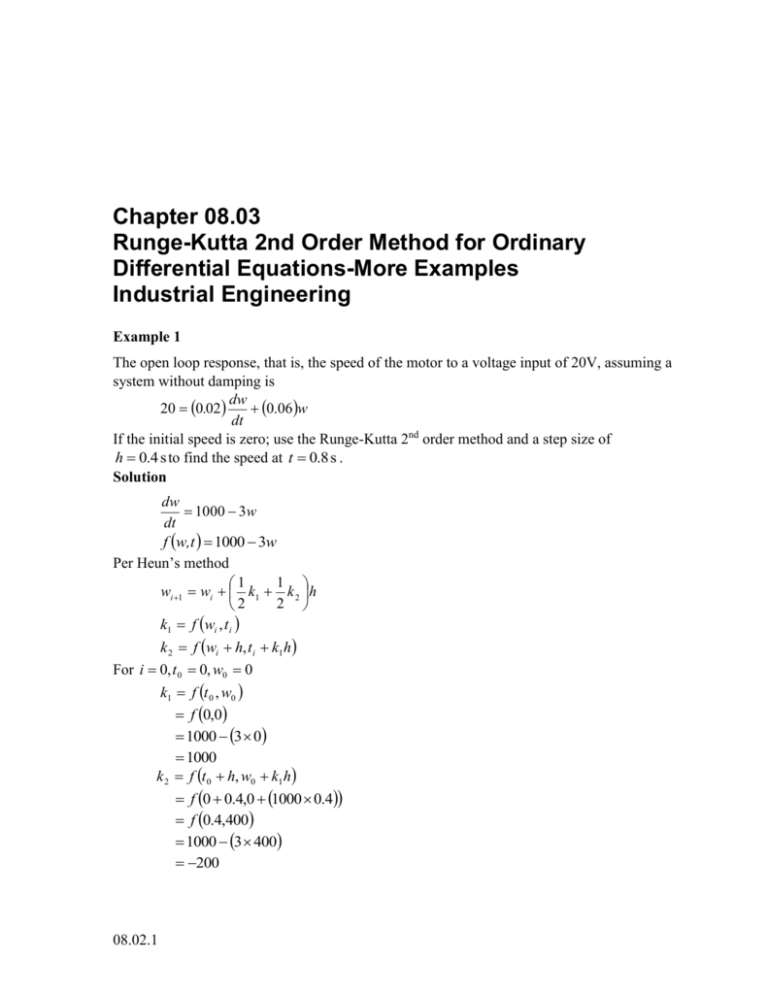
Chapter 08.03 Runge-Kutta 2nd Order Method for Ordinary Differential Equations-More Examples Industrial Engineering Example 1 The open loop response, that is, the speed of the motor to a voltage input of 20V, assuming a system without damping is dw 20 0.02 0.06w dt If the initial speed is zero; use the Runge-Kutta 2nd order method and a step size of h 0.4 s to find the speed at t 0.8 s . Solution dw 1000 3w dt f w,t 1000 3w Per Heun’s method 1 1 wi 1 wi k1 k 2 h 2 2 k1 f wi , t i k 2 f wi h, t i k1h For i 0, t 0 0, w0 0 k1 f t 0 , w0 f 0,0 1000 3 0 1000 k 2 f t 0 h, w0 k1h f 0 0.4,0 1000 0.4 f 0.4,400 1000 3 400 200 08.02.1 08.02.2 Chapter 08.02 1 1 w1 w0 k1 k 2 h 2 2 1 1 0 1000 200 0.4 2 2 0 500 100 0.4 160 rad/s w1 is the approximate speed of the motor at t t1 t 0 h 0 0.4 0.4 s w0.4 w1 160 rad/s For i 1, t1 t 0 h 0 0.4 0.4, w1 160 k1 f t1 , w1 f 0.4, 160 1000 3 160 520 k 2 f t1 h, w1 k1h f 0.4 0.4, 160 520 0.4 f 0.8, 368 1000 3 368 104 1 1 w2 w1 k1 k 2 h 2 2 1 1 160 520 104 0.4 2 2 160 208 0.4 243.2 rad/s w2 is the approximate speed of the motor at t t 2 t1 h 0.4 0.4 0.8 s w0.8 w2 243.2 rad/s The exact solution of the ordinary differential equation is given by 1000 1000 3t wt e 3 3 The solution to this nonlinear equation at t 0.8 s is w0.8 303.09 rad/s The results from Heun’s method are compared with exact results in Figure 1. Euler Method for ODE-More Examples: Industrial Engineering 08.02.3 Figure 1 Heun’s method results for different step sizes. Using smaller step size would increases the accuracy of the result as given in Table 1 and Figure 2 below. Table 1 Effect of step size for Heun’s method. Et Step size, h w0.8 t % 0.8 0.4 0.2 0.1 0.05 160.00 243.20 295.61 301.70 302.79 463.09 59.894 7.4823 1.3929 0.30613 152.79 19.761 2.4687 0.45954 0.10100 08.02.4 Chapter 08.02 Figure 2 Effect of step size in Heun’s method. In Table 2, the Euler’s method and Runge-Kutta 2nd order method results are shown as a function of step size. Table 2 Comparison of Euler and the Runge-Kutta methods. Step size, w0.8 h Euler Heun Midpoint Ralston 0.8 800 160.00 160.00 160.00 0.4 320 243.20 243.20 243.20 0.2 324.8 295.61 295.61 295.61 0.1 314.11 301.70 301.70 301.70 0.05 308.58 302.79 302.79 302.79 In Figure 3, the comparison is shown over the range of time. Euler Method for ODE-More Examples: Industrial Engineering 08.02.5 Figure 3 Comparison of Euler and Runge-Kutta methods with exact results over time (h=0.4).


